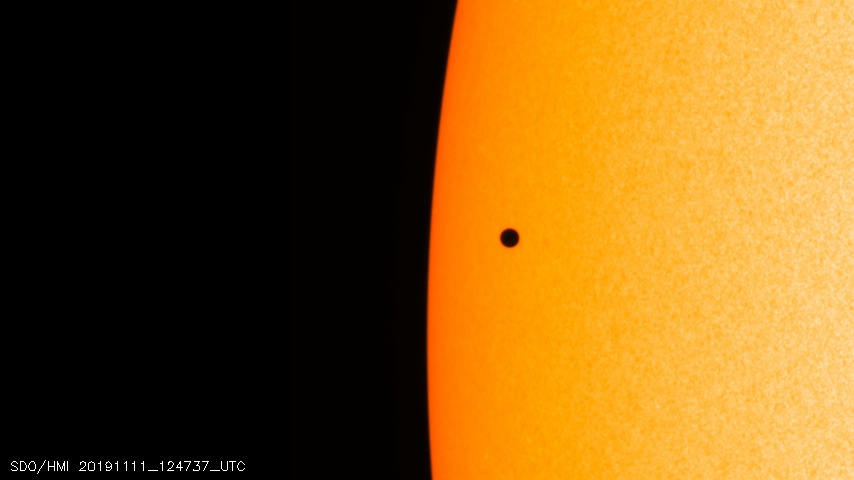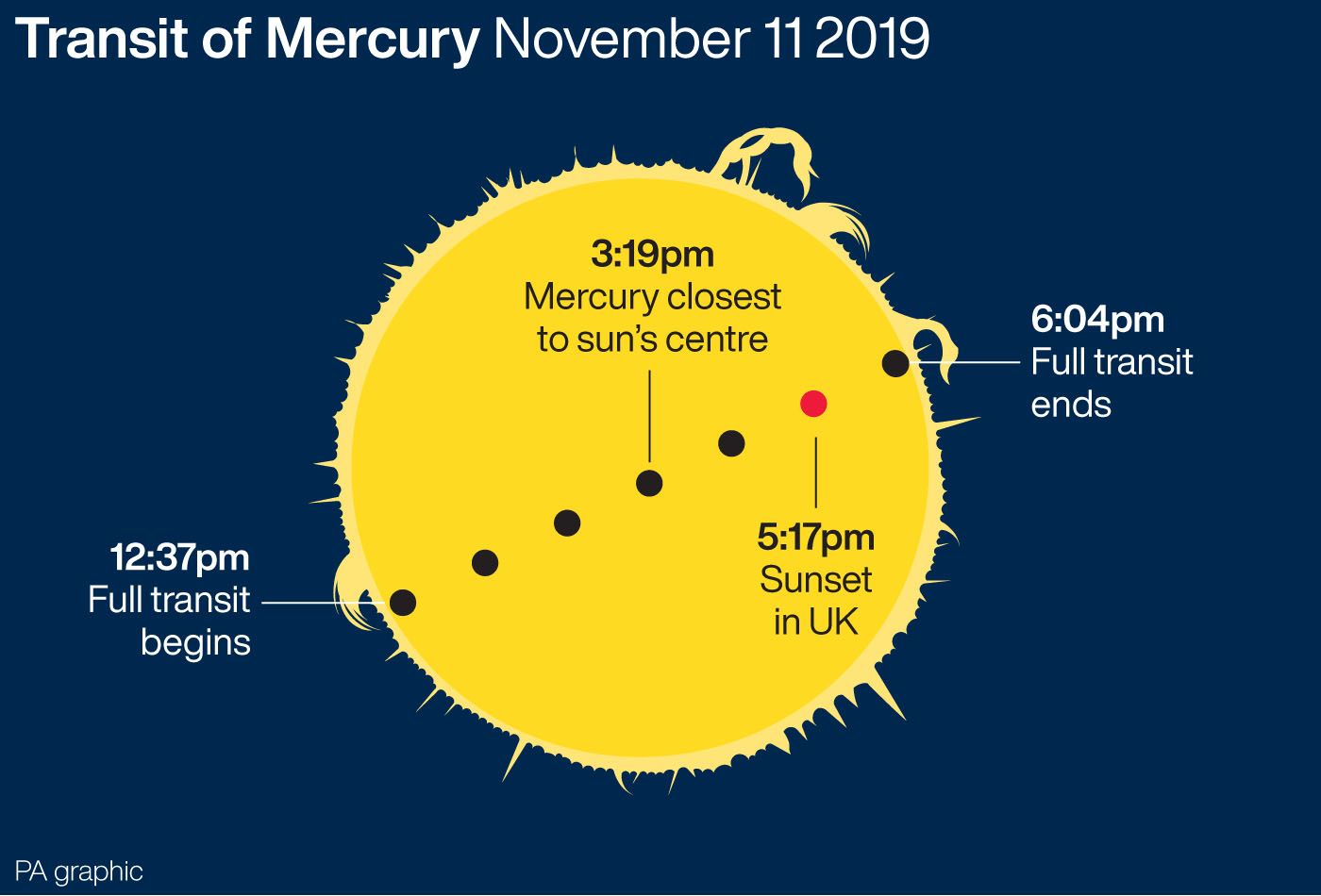
Astronomers and space enthusiasts watched as Mercury made a rare transit of the sun on Monday.
The smallest planet in the solar system could be seen as a tiny black disc moving across the glowing orb, starting just after 12.35pm.
Members of the public wishing to see the special event were urged to join amateur astronomical societies and public observatories across the country to witness the occasion safely.
However, poor weather conditions hampered some efforts to catch the occasion.
For the next few hours, Mercury will pass between the Earth & the Sun, silhouetting it against our home star. As you watch the #MercuryTransit:
😎 Use solar viewing glasses ☀️ Don't look directly at the Sun 🔭 Use a telescope with solar filters
More: https://t.co/ezQOp4BQ7T pic.twitter.com/HmDGbC7ypm
— NASA (@NASA) November 11, 2019
The last time Mercury passed the sun in this way was in 2016, but the next is not due to happen until 2032.
Nasa revealed some of the first images of the transit, taken from its satellite monitoring the sun.
The entire event is visible from the eastern United States and Canada, the south-western tip of Greenland, most of the Caribbean, central America, the whole of South America and some of west Africa.

In Europe – including the UK – the Middle East and most of Africa, the sun will set before the transit ends, and so the latter part of the event will not be visible.
Every 88 years Mercury completes each orbit around the sun, and passes between the Earth and sun every 116 days.
Because the planet’s orbit around the sun is tilted, it normally appears to pass above or below our nearest star.

A transit can only take place when the Earth, Mercury and the sun are exactly in line in three dimensions.
Looking at the sun without appropriate protection, either during the transit or at any other time, can cause serious and permanent damage to the eyes.

Enjoy the convenience of having The Sunday Post delivered as a digital ePaper straight to your smartphone, tablet or computer.
Subscribe for only £5.49 a month and enjoy all the benefits of the printed paper as a digital replica.
Subscribe